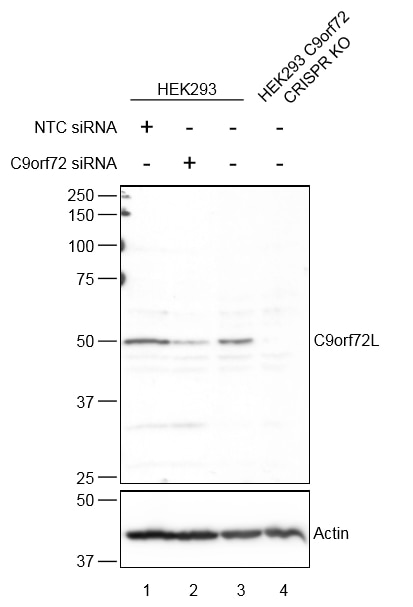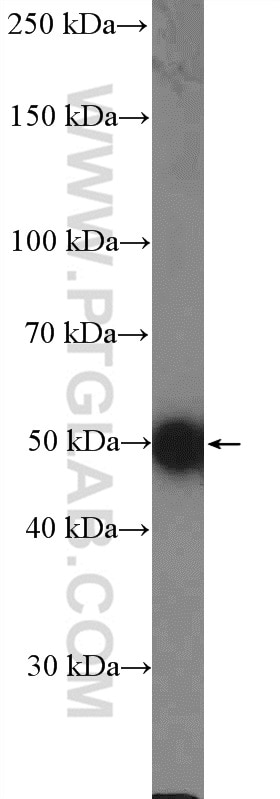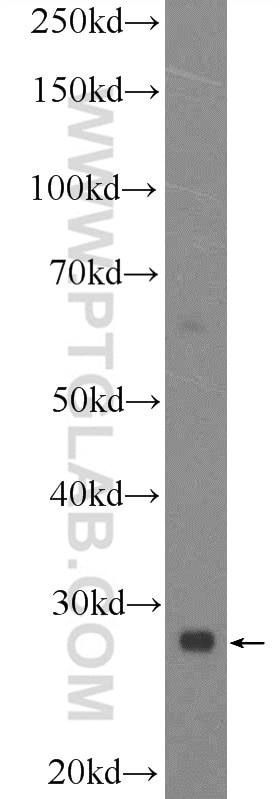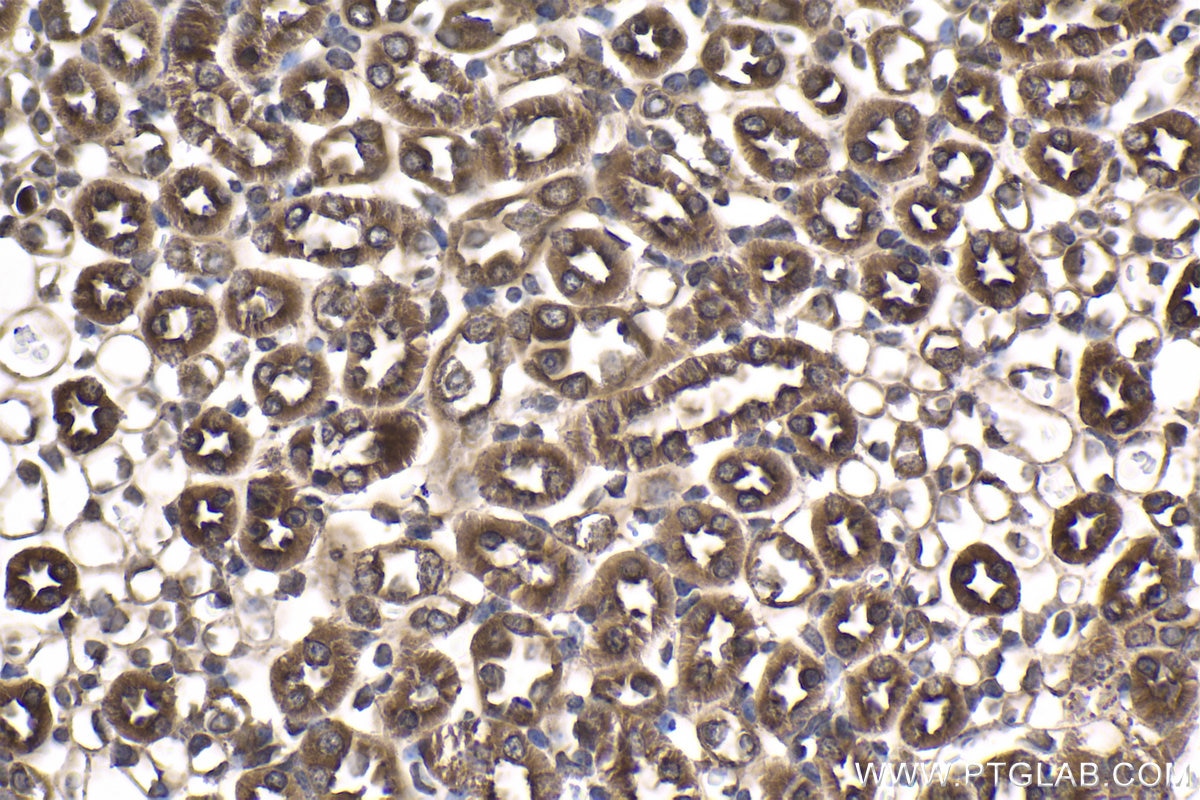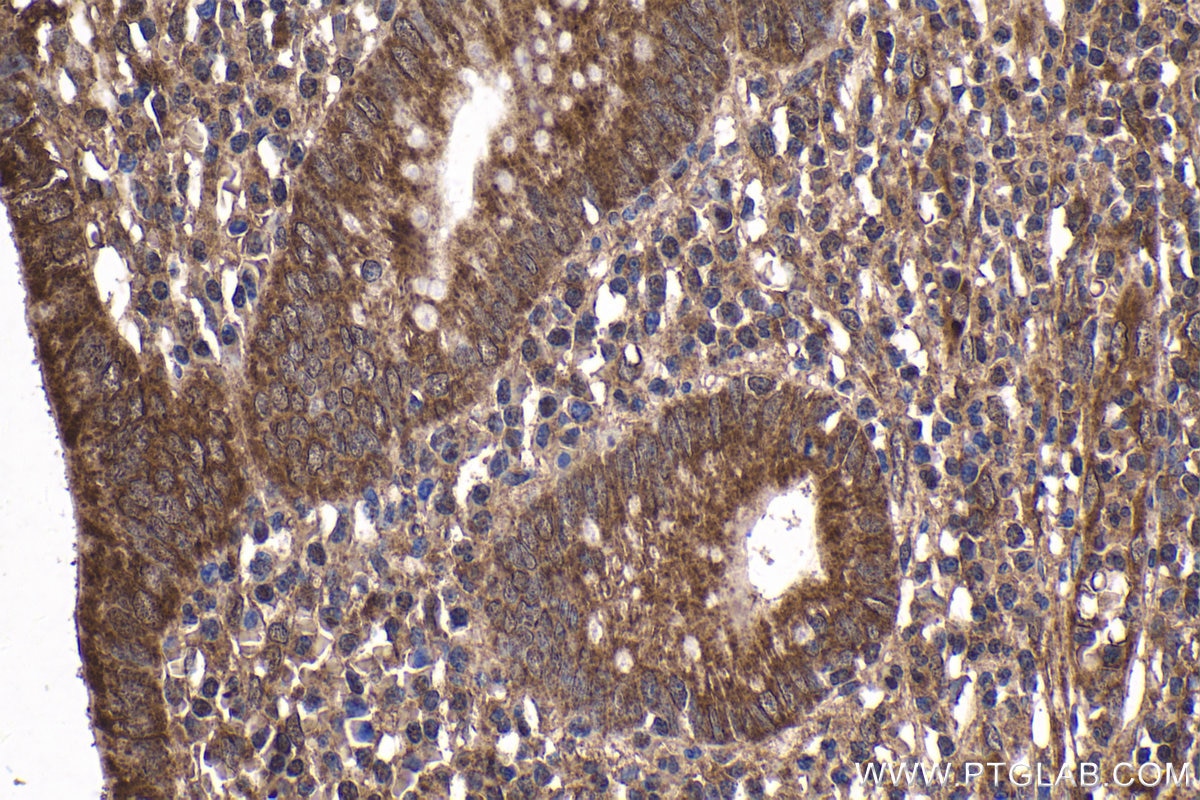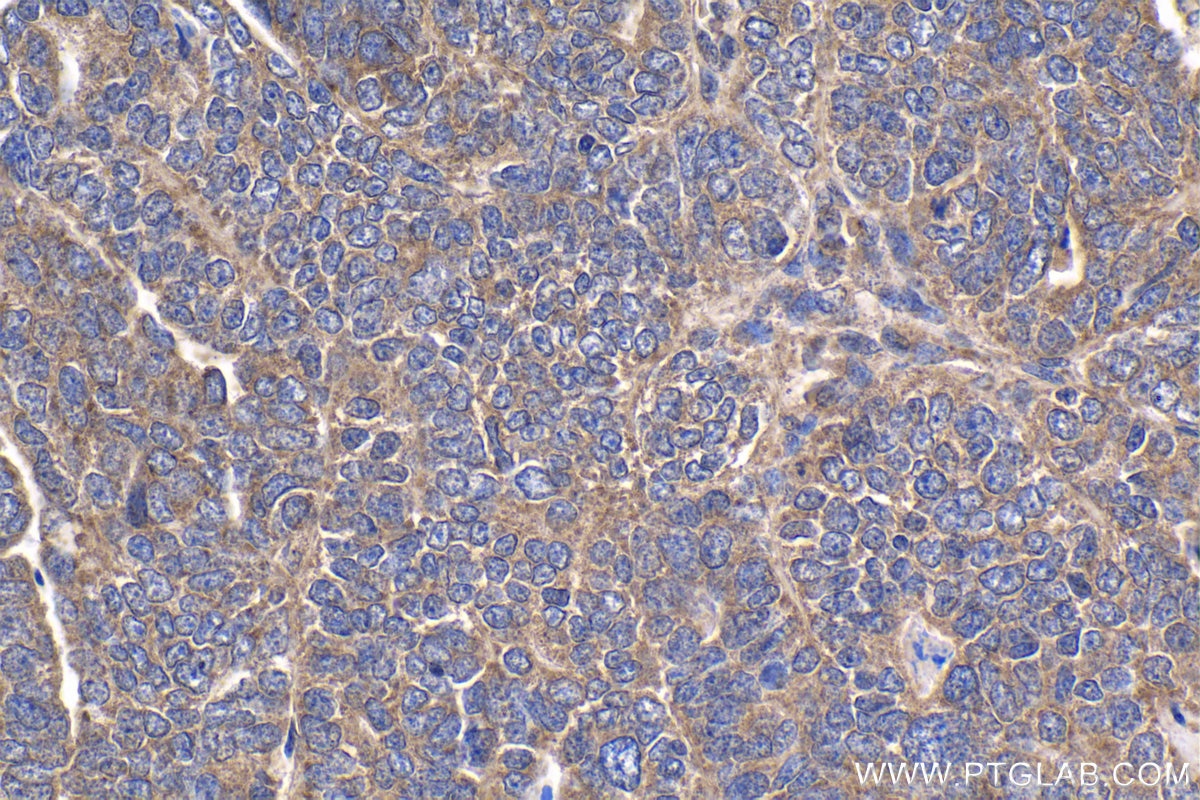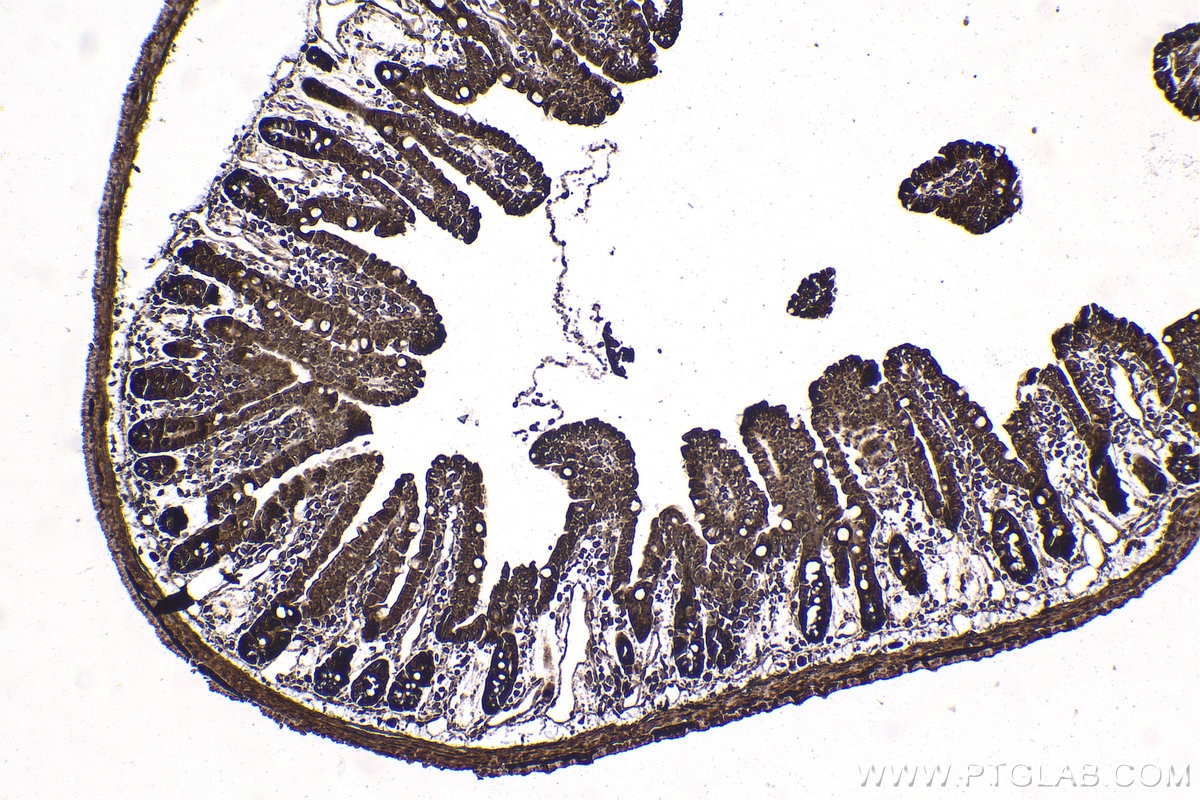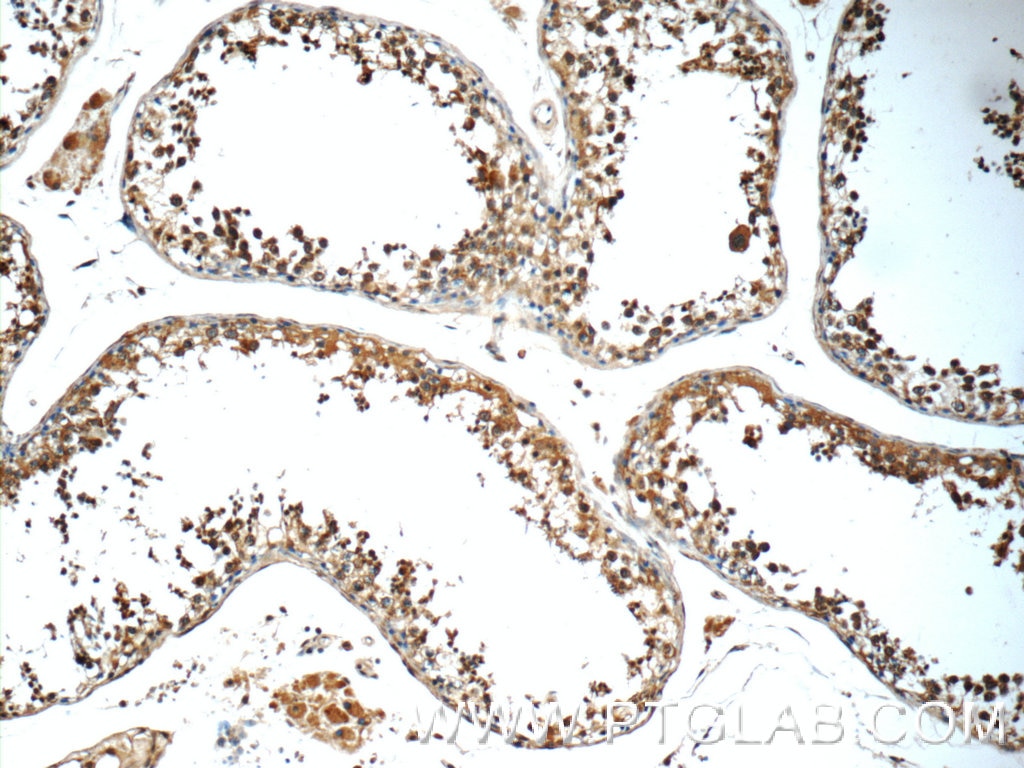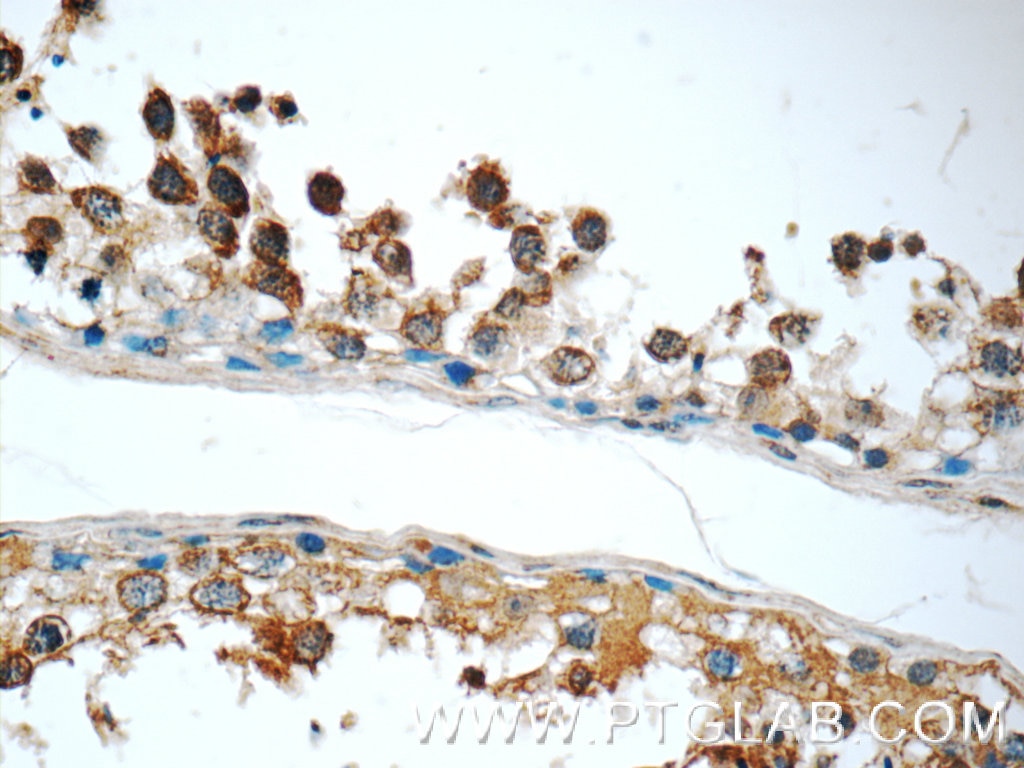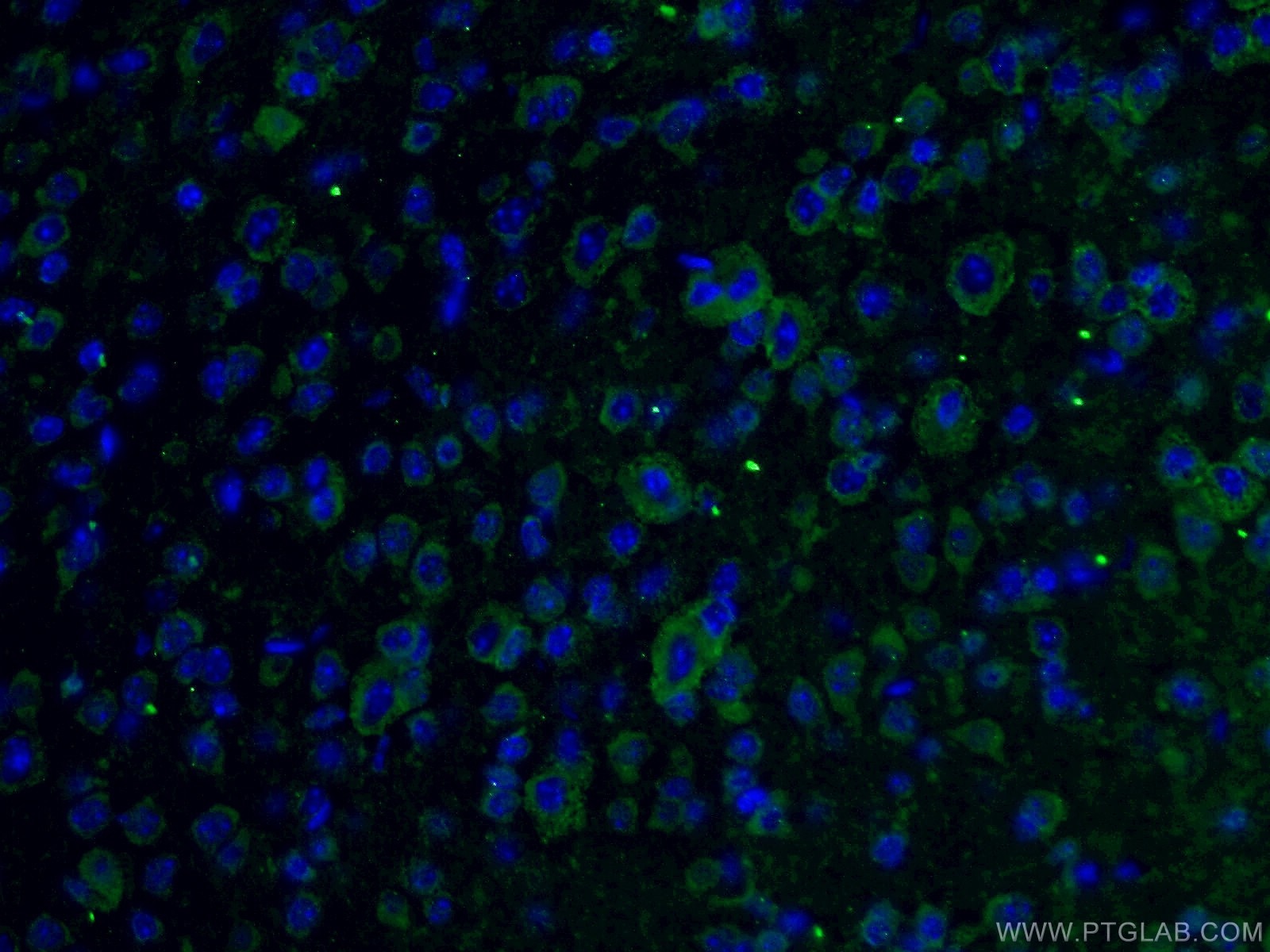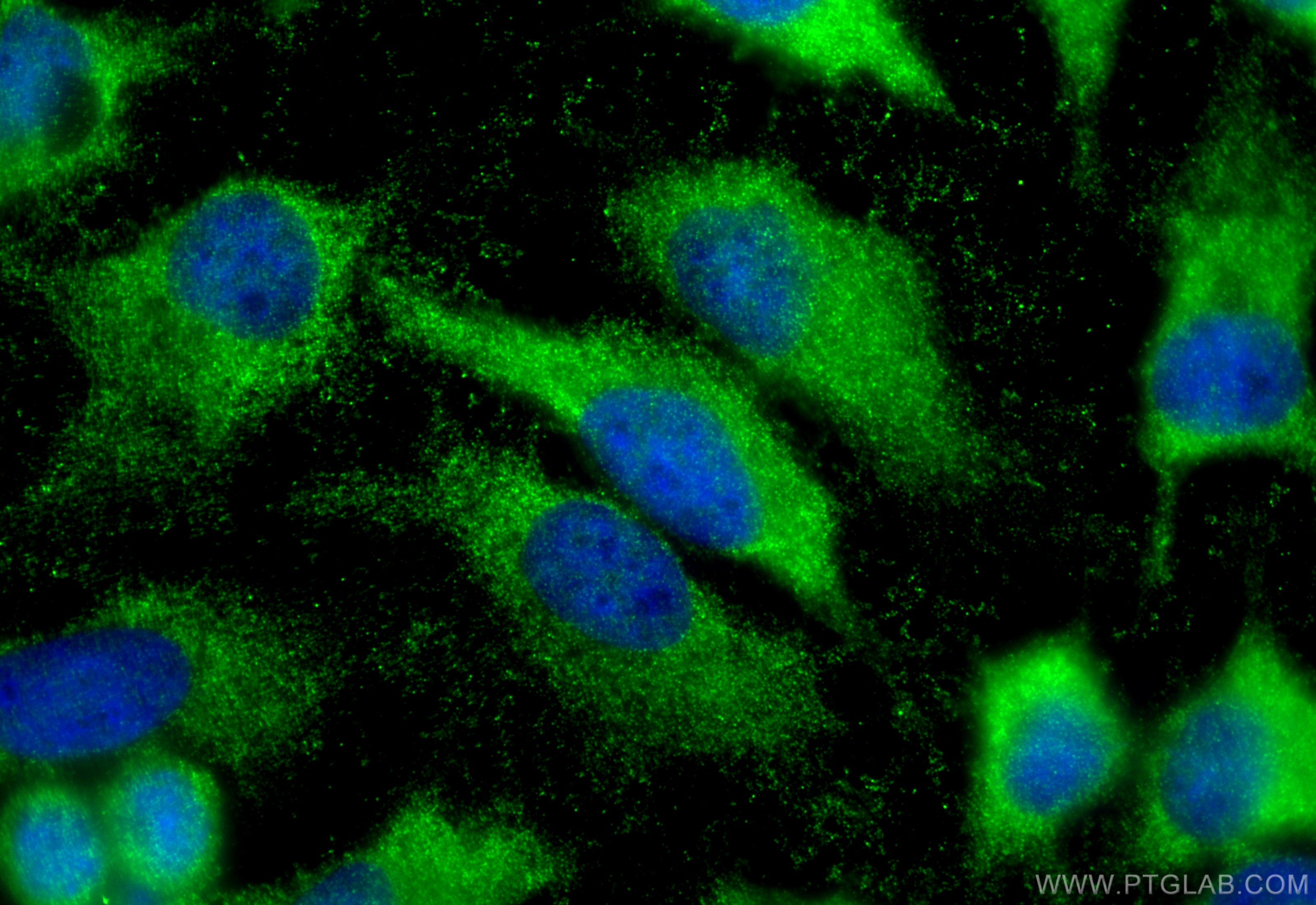- Phare
- Validé par KD/KO
Anticorps Polyclonal de lapin anti-C9orf72
C9orf72 Polyclonal Antibody for WB, IHC, IF/ICC, ELISA
Hôte / Isotype
Lapin / IgG
Réactivité testée
Humain, souris et plus (1)
Applications
WB, IHC, IF/ICC, ELISA
Conjugaison
Non conjugué
N° de cat : 25757-1-AP
Synonymes
Galerie de données de validation
Applications testées
| Résultats positifs en WB | tissu cérébral de souris, cellules HEK-293, cellules SH-SY5Y |
| Résultats positifs en IHC | tissu d'appendicite humain, tissu de tumeur ovarienne humain, tissu d'intestin grêle de souris, tissu rénal de souris, tissu testiculaire humain il est suggéré de démasquer l'antigène avec un tampon de TE buffer pH 9.0; (*) À défaut, 'le démasquage de l'antigène peut être 'effectué avec un tampon citrate pH 6,0. |
| Résultats positifs en IF/ICC | cellules HeLa, |
Dilution recommandée
| Application | Dilution |
|---|---|
| Western Blot (WB) | WB : 1:300-1:1500 |
| Immunohistochimie (IHC) | IHC : 1:250-1:1000 |
| Immunofluorescence (IF)/ICC | IF/ICC : 1:50-1:500 |
| It is recommended that this reagent should be titrated in each testing system to obtain optimal results. | |
| Sample-dependent, check data in validation data gallery | |
Applications publiées
| KD/KO | See 1 publications below |
| WB | See 6 publications below |
| IHC | See 1 publications below |
| IF | See 2 publications below |
Informations sur le produit
25757-1-AP cible C9orf72 dans les applications de WB, IHC, IF/ICC, ELISA et montre une réactivité avec des échantillons Humain, souris
| Réactivité | Humain, souris |
| Réactivité citée | rat, Humain |
| Hôte / Isotype | Lapin / IgG |
| Clonalité | Polyclonal |
| Type | Anticorps |
| Immunogène | C9orf72 Protéine recombinante Ag22723 |
| Nom complet | chromosome 9 open reading frame 72 |
| Masse moléculaire calculée | 481 aa, 54 kDa |
| Poids moléculaire observé | 25-30 kDa |
| Numéro d’acquisition GenBank | BC068445 |
| Symbole du gène | C9orf72 |
| Identification du gène (NCBI) | 203228 |
| Conjugaison | Non conjugué |
| Forme | Liquide |
| Méthode de purification | Purification par affinité contre l'antigène |
| Tampon de stockage | PBS with 0.02% sodium azide and 50% glycerol |
| Conditions de stockage | Stocker à -20°C. Stable pendant un an après l'expédition. L'aliquotage n'est pas nécessaire pour le stockage à -20oC Les 20ul contiennent 0,1% de BSA. |
Informations générales
C9ORF72 has a domain whith polymorphic hexanucleotide repeat (GGGGCC). The C9ORF72-hexanucleotide repeat expansions have been recently identified as genetic markers in amyotrophic lateral sclerosis (ALS) and frontotemporal lobar degeneration (FTLD). The C9ORF72 repeat expansions may indicate a worse prognosis in ALS. Human C9ORF72 has some isoforms with MW 54-60 kDa and 25-30 kDa. Mouse C9orf72 has some isoforms with MW 50-60 kDa and 35 kDa. This antibody detects the N-terminal of C9orf72.
Protocole
| Product Specific Protocols | |
|---|---|
| WB protocol for C9orf72 antibody 25757-1-AP | Download protocol |
| IHC protocol for C9orf72 antibody 25757-1-AP | Download protocol |
| IF protocol for C9orf72 antibody 25757-1-AP | Download protocol |
| Standard Protocols | |
|---|---|
| Click here to view our Standard Protocols |
Publications
| Species | Application | Title |
|---|---|---|
Nat Med Haploinsufficiency leads to neurodegeneration in C9ORF72 ALS/FTD human induced motor neurons. | ||
Acta Neuropathol An interaction between synapsin and C9orf72 regulates excitatory synapses and is impaired in ALS/FTD. | ||
Proc Natl Acad Sci U S A A protease-activated, near-infrared fluorescent probe for early endoscopic detection of premalignant gastrointestinal lesions. | ||
Elife Implementation of an antibody characterization procedure and application to the major ALS/FTD disease gene C9ORF72. | ||
Cell Rep CCDC57 Cooperates with Microtubules and Microcephaly Protein CEP63 and Regulates Centriole Duplication and Mitotic Progression. | ||
Theranostics C9orf72 regulates the unfolded protein response and stress granule formation by interacting with eIF2α |
